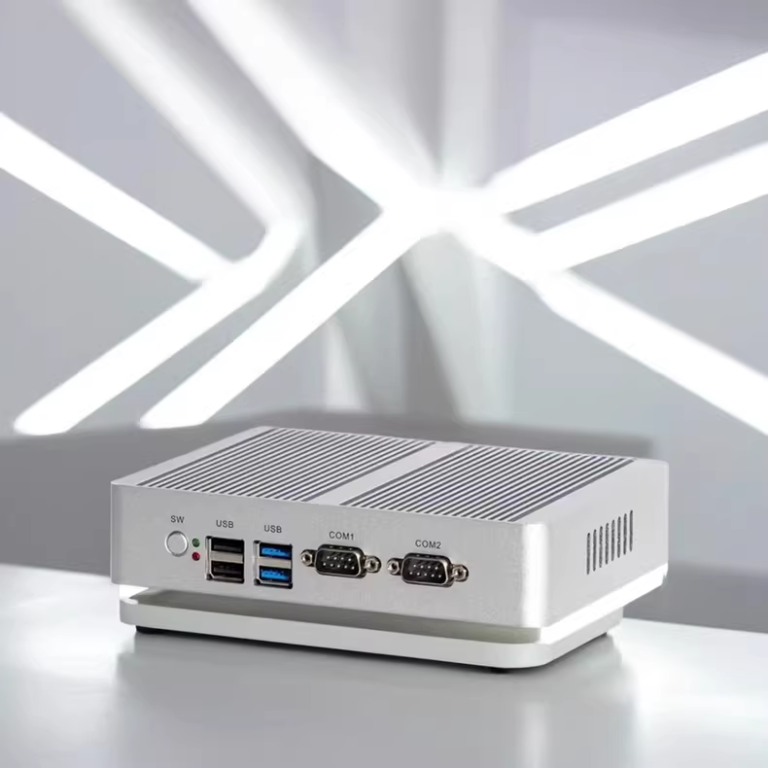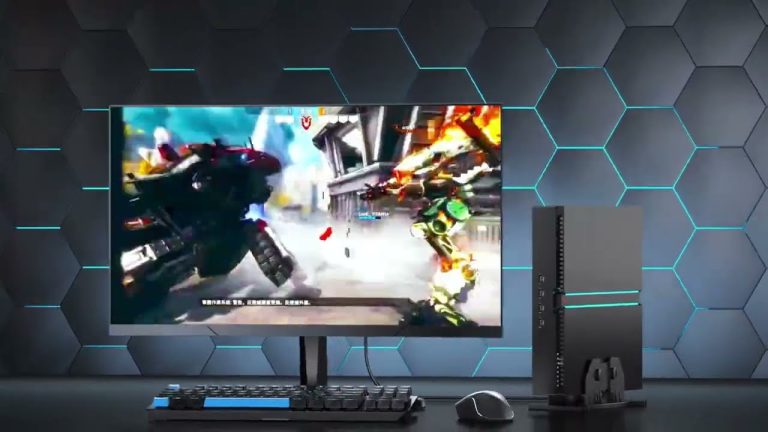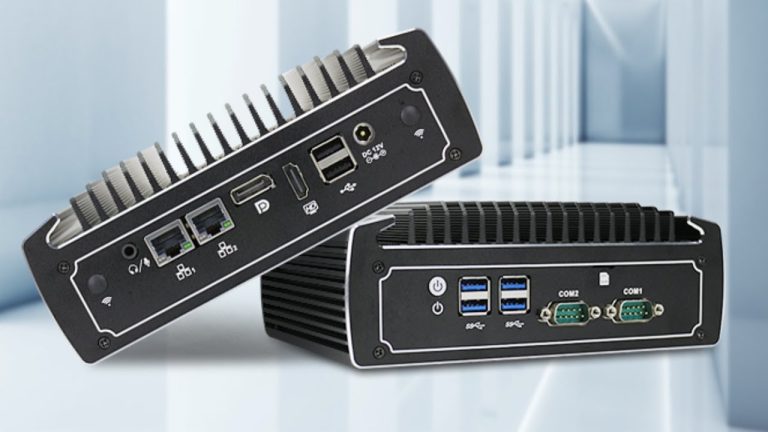Turning a mini PC into a router can give you more control, flexibility, and performance than using a traditional router. With the right setup, your mini PC can manage network traffic efficiently, handle VPNs, and perform advanced firewall functions.
Let’s find out how to turn a mini PC into a router
1. Prepare the Hardware.
Ensure your mini PC has at least two network interfaces: one for WAN (connecting to the internet modem) and one for LAN (connecting to the devices on your network). If your mini PC only has one Ethernet port, you can add a USB to Ethernet adapter.
And minimum system requirements for most router operating systems include a CPU of at least 500 MHz, 256 MB of RAM, and minimal storage (a 32GB SSD is more than enough).
2. Choose the Router Operating System (Router OS).
- pfSense. This is one of the most popular options. It is a free, open-source OS based on FreeBSD. It includes advanced routing, firewall, and VPN features, making it highly customizable. You can download it, create a bootable USB drive, and install Pfsense on the mini PC.
- RouterOS (MikroTik). Another powerful choice, offering a wide range of network management tools. However, it requires a paid license after 24 hours of full feature use.
3. Install the Router OS.
- pfSense Installation. Download the pfSense image, create a bootable USB, and insert it into your mini PC. Boot into BIOS to select the USB as the boot drive and follow the guided installation. The process involves configuring network interfaces and setting up basic firewall rules. Once the installation is complete, configure the WAN and LAN interfaces (usually the built-in Ethernet port for WAN and a USB to Ethernet adapter for LAN).
- RouterOS Installation. If you choose RouterOS, the installation is similar, involving downloading an ISO image, creating a bootable USB, and then installing it on your mini PC.
4. Configure the Router.
After installation, connect your mini PC’s WAN port to your internet modem and the LAN port to a switch or directly to your devices. Use a web browser to access the router’s configuration interface (default for pfSense is usually 192.168.1.1). From here, you can set up DHCP, DNS, firewall rules, and other network settings like VPN or VLANs.
5. Add Wi-Fi.
If your mini PC doesn’t have built-in Wi-Fi, you can add a wireless access point to the LAN side, or use a USB Wi-Fi adapter and configure it to act as an access point if your router OS supports it.
6. Optimize Performance,
Ensure that your mini PC is adequately cooled, especially if it’s running 24/7. You can also monitor the performance using the built-in dashboards of pfSense or other OS choices, which show system health and network activity.
How to Optimize a Mini PC Router
To optimize the performance of your mini PC router:
- Turn off features or services you don’t need to reduce CPU and memory usage.
- An SSD can improve boot times and response speeds.
- Excessive logging can consume resources; configure logging levels appropriately.
- Use high-quality network cards (NICs) for better performance, especially for high-speed internet connections.
- Regularly check CPU, memory, and network usage through the router OS dashboard, and adjust configurations as needed.
What to Do If My Mini PC Router Isn’t Working Properly?
If your mini PC router isn’t functioning as expected:
- Ensure that the correct network interfaces are assigned to WAN and LAN ports.
- Double-check firewall rules, DNS settings, and DHCP assignments.
- Use the log viewer in pfSense or RouterOS to identify any potential errors.
- A simple restart can fix temporary software glitches.
- Ensure that the router OS is up to date to avoid bugs and security vulnerabilities.
FAQs
Can I use my mini PC router to create a guest network?
Yes, many router operating systems, such as pfSense and RouterOS, allow you to create a separate guest network. This can be done by configuring VLANs (Virtual Local Area Networks) or setting up a dedicated subnet for guest access. The guest network can have its own rules, separate from your main network, to ensure security and limit access to sensitive data.
How do I ensure my mini PC router is secure from outside threats?
To secure your mini PC router, make sure you regularly update the router OS with the latest security patches. You should also configure firewall rules carefully to block unwanted traffic, enable logging to monitor suspicious activity, and consider setting up an Intrusion Detection System (IDS) or Intrusion Prevention System (IPS) like Snort or Suricata, both of which are supported by pfSense.
Can I monitor bandwidth usage with a mini PC router?
Yes, router OS like pfSense and RouterOS include tools to monitor and analyze bandwidth usage. pfSense has built-in monitoring features, such as RRD graphs, that show real-time bandwidth consumption and historical data. You can also install additional packages, such as ntopng, to get detailed insights into network traffic by device and application.
How can I add parental controls to my mini PC router?
Many router OS, like pfSense and Untangle, allow you to set up parental controls by blocking certain websites or categories of content. You can use content filtering features or install additional packages like Squid and SquidGuard in pfSense to restrict access to inappropriate websites. Untangle also offers a Web Filter feature that makes it easy to manage internet access for kids.
Can I configure load balancing on my mini PC router?
Yes, load balancing is a common feature in advanced router OS like pfSense and RouterOS. With load balancing, you can distribute network traffic across multiple internet connections, improving bandwidth usage and providing redundancy. This setup is particularly useful for small businesses or home offices with multiple ISPs, ensuring uninterrupted internet access even if one connection goes down.
What happens if my mini PC router fails?
If your mini PC router fails, you will lose internet connectivity for all devices connected to it. To prevent downtime, you can create backups of your router configuration regularly, so it’s easy to restore settings if you need to reinstall the OS. For critical setups, consider using a second mini PC router in a failover setup, where one acts as the primary router and the other as a backup, automatically taking over if the primary fails.
Is there a way to prioritize certain devices or applications on my network?
Yes, most router OS allow you to configure Quality of Service (QoS) settings. With QoS, you can prioritize specific devices or applications (e.g., gaming consoles, video streaming services) to ensure they get sufficient bandwidth, even when the network is congested. This is especially useful for households or offices with multiple users and bandwidth-intensive tasks.
Can I run multiple services (like a firewall, VPN, and DNS) simultaneously on a mini PC router?
Yes, many router operating systems, such as pfSense, are designed to run multiple services concurrently. You can how to set up a firewall with mini-pc, VPN, DNS server, and other networking features all on the same device. However, make sure your mini PC has sufficient resources (CPU, RAM, and storage) to handle the additional load, especially if your network has high traffic.
How do I set up a VPN on my mini PC router?
Setting up a VPN on a mini PC router is straightforward with platforms like pfSense or RouterOS. pfSense supports OpenVPN and IPsec, allowing you to configure a VPN server to securely access your home network from anywhere. You can also set up VPN client connections to encrypt all outgoing traffic. The setup typically involves generating certificates, configuring server settings, and then creating user accounts for remote access.
What kind of storage should I use for a mini PC router?
For best performance, an SSD (Solid State Drive) is recommended over a traditional hard drive (HDD). An SSD offers faster read/write speeds, reduces power consumption, and generates less heat, which is beneficial for a device running 24/7. A 32GB SSD should be more than enough for most router OS installations and log storage.
Is it possible to throttle bandwidth for specific devices on my network?
Yes, with Quality of Service (QoS) settings, you can throttle or limit bandwidth for specific devices or applications. Router OS like pfSense and RouterOS provide detailed QoS options, allowing you to set bandwidth caps, prioritize certain devices, or restrict bandwidth-hogging applications. This can help maintain a balanced network, ensuring that critical devices or services receive adequate bandwidth.
Can I turn my mini PC router into a network switch?
Yes, with advanced configurations in pfSense or RouterOS, you can configure your mini PC to function as a network switch in addition to its router duties. You can bridge network interfaces or use VLANs to segment traffic across different ports, effectively turning the mini PC into a switch for multiple connected devices.
How can I create a backup of my mini PC router’s configuration?
Router OS like pfSense offer built-in backup features. In pfSense, you can navigate to the backup section of the web interface and download a backup of your entire configuration. It’s good practice to create backups regularly, especially after significant changes. You can restore this configuration in case of system failure or during migration to a new device.
Can a mini PC router handle large networks with many devices?
Yes, depending on the hardware specs of your mini PC, it can handle larger networks with many devices. By choosing the right hardware (more RAM and CPU power) and a powerful router OS (like pfSense or RouterOS), your mini PC can effectively manage traffic for networks with hundreds of devices. Features like load balancing, VLAN segmentation, and QoS can help optimize performance even with many connected devices.
How do I integrate my mini PC router with existing home automation systems?
Most router OS can be configured to support home automation systems by ensuring proper network segmentation and security. You can create a dedicated VLAN for IoT devices and home automation to keep them separate from your main network. This enhances security by isolating less secure IoT devices from critical systems, while allowing them to communicate via the internet as needed.















